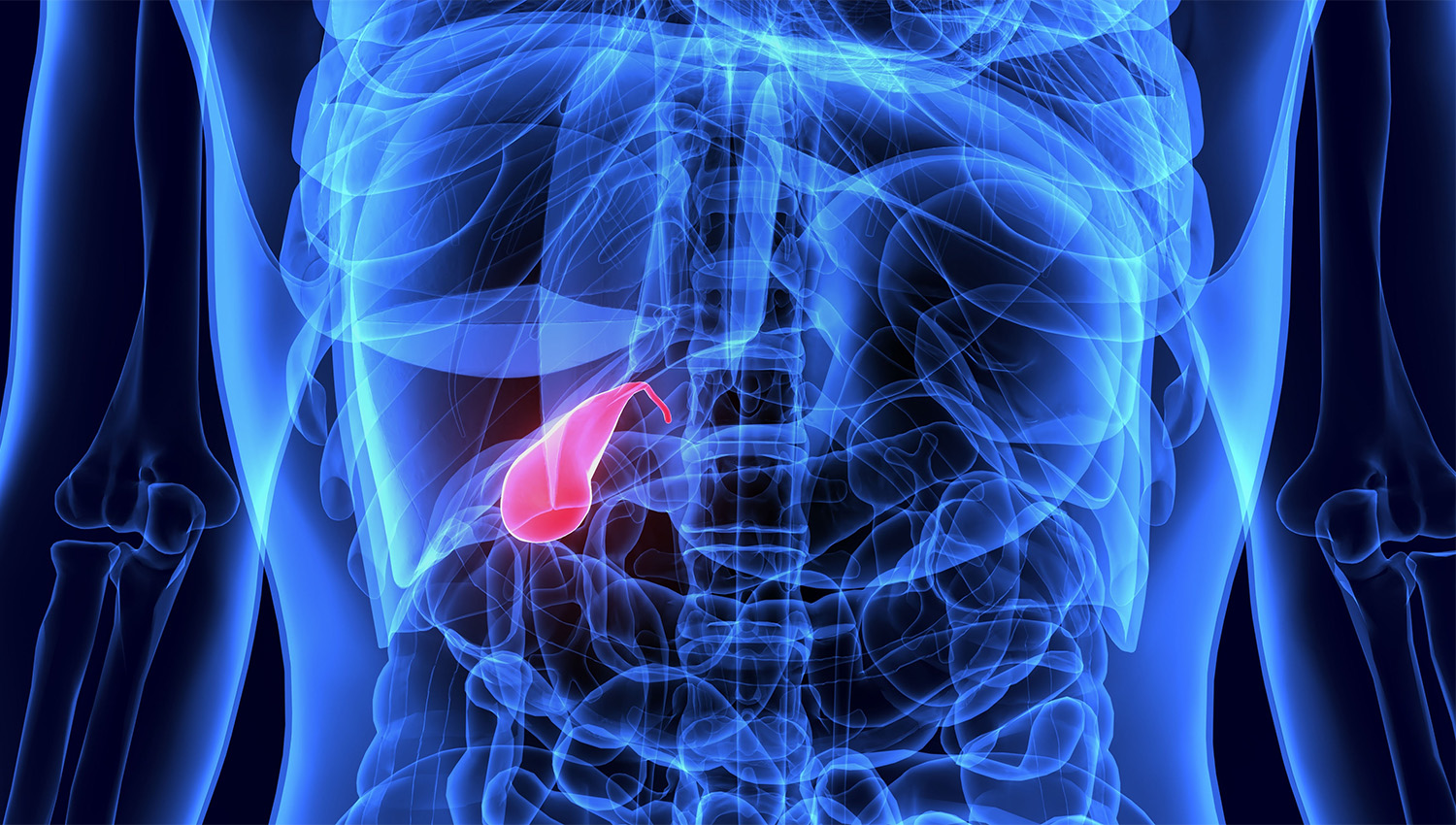Gallbladder
The gallbladder is a small organ, located under the liver in the upper-right segment of the abdomen. The liver is constantly producing bile, and the gallbladder stores a small portion of this. Bile breaks down fats, aiding digestion. If gallstones are formed, they may block the transmission of bile from the gallbladder to the liver, causing pain, and potentially serious complications.
Gallstones are commonly present in the digestive system, with up to 10% of adults having them. Removing the gallbladder surgically (cholecystectomy) is currently the best treatment for people who have pain and other symptoms caused by gallstones.

